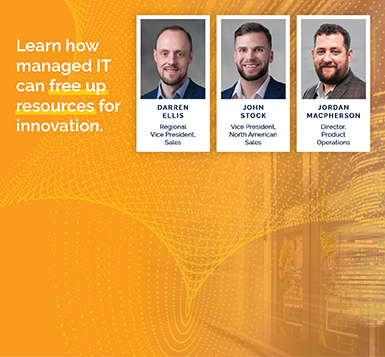Artificial Intelligence, Predictive Maintenance, and the Smart, Distributed Future, Part 1
Park Place Hardware Maintenance
The data center as we know it isn’t going away, but it is experiencing a radical reinvention.
The evolution of information technology since the 1940s-era ENIAC computer has been swift and literally world-changing. The approaches applied to maintaining our now vast technology assets, on the other hand, have been slower to develop. But today we’re finally standing on the cusp of the most transformative innovation in IT support—the application of artificial intelligence to this once almost exclusively human field—and it couldn’t have come soon enough.
A Great Leap at a Perfect Time
The data center as we know it isn’t going away, but it is experiencing a radical reinvention. Businesses are turning to hybrid models to simultaneously take advantage of public cloud and owned IT assets, and Gartner predicts 90 percent of organizations will follow this route by 2020. Even owned assets are shifting, with private clouds hosted on premises and in colocation facilities, and modular data center pods taking compute ever-farther afield.
In other words, it’s all getting very complex. And that’s before we start talking about remote facilities, the emergence of IoT sensors all over the place, and the push toward the edge to handle the more distributed nature of our “smarter” lives. Combining such disparate elements into a unified infrastructure is an architectural challenge, fortunately one any number of consultancies will help build out. Keeping it running is another one, which often goes unnoticed until a major outage makes headlines.
To keep up in the race for reliability—from four-nines, to five-nines, to six—in a tightening labor market and under increasing budget pressure is already difficult. Figuring out where to get more engineers to check on all those micro-mobile data centers that could be processing 75 percent or more of enterprise data by 2022, that’s nigh on impossible.
New support methods are required for this new era. Fortunately, they’re here, as machine learning technologies are being applied to enterprise IT hardware maintenance.
Robots to the Rescue?
We’re not talking about C3PO here, but learning computers are coming to understand our networks and interdependent IT systems in more holistic ways than our sniffers, diagnostic modules, and monitoring dashboards—or even the humans working with these tools—ever have. The details of data center maintenance, it turns out, make for a great use case for machine learning.
Already, there is a plethora of performance information generated and logged by data center hardware, all day, every day. The biggest problem for administrators has always been to see through the chaos to identify problems in time to minimize business impacts, but that’s a tall order. It’s all too easy to overlook a minor error report or be called away to deal with a different issue, only to have a serious outage erupt.
In remote facilities, there is the additional complication of sending engineers out to check on the equipment. This is time-consuming and costly, and will only become more so as edge computing proliferates.
AI-based monitoring systems offer significant advantage. They can keep track of every bit and byte of performance information. They don’t get tired at 3 AM and never fail to add the latest questionable reading into their ongoing data center health analysis.
Moreover, using machine learning techniques, AI-based remote monitoring takes the next step, gleaning insights from disorganized and seemingly unconnected data points. In relatively short periods, these systems come to identify what types of issues precede outages and to diagnose failures in the earliest stages.
With that capability we’re starting to achieve the data center manager’s dream—being able to solve a problem before it starts. In other words, predictive maintenance.



